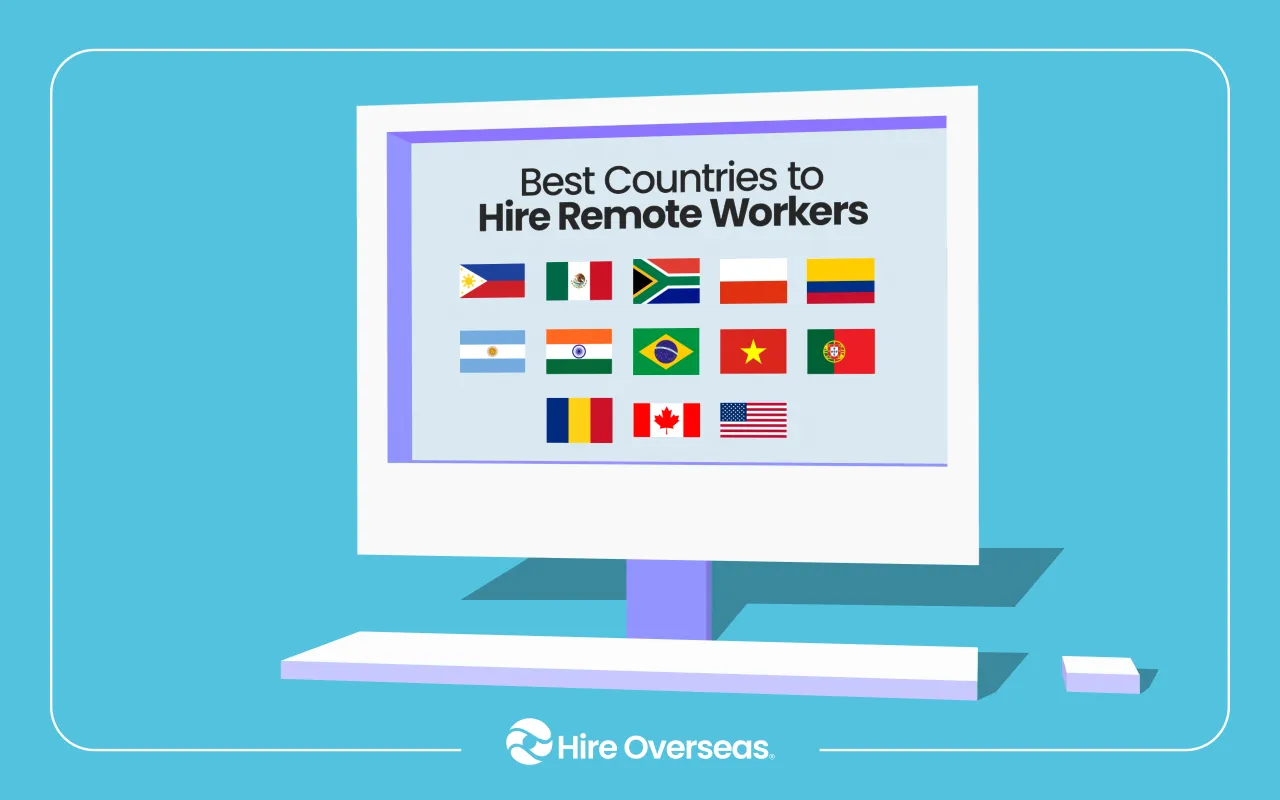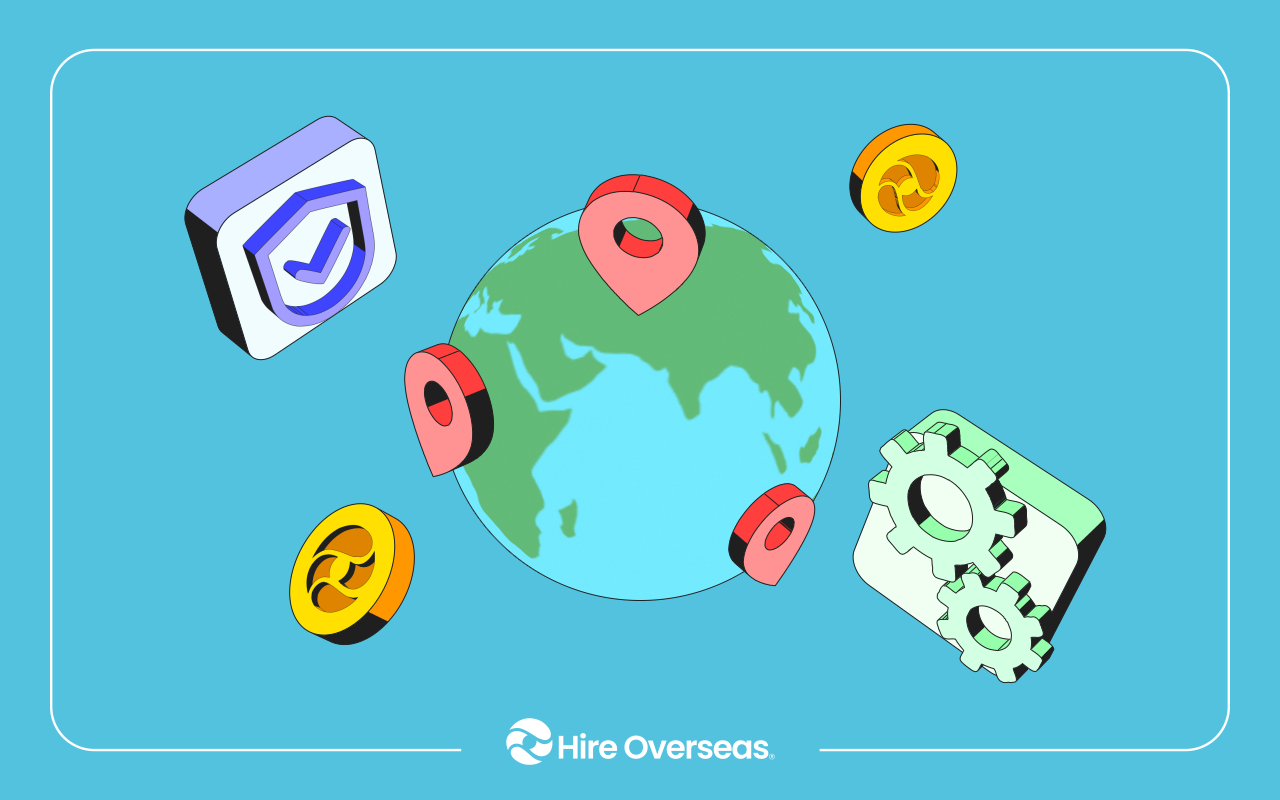Best Countries to Hire Remote Workers in 2025: Expert Guide by Hire Overseas

In today’s hyper-connected economy, hiring remote talent isn’t just a trend—it’s a strategic advantage. Businesses of all sizes are tapping into global workforces to access specialized skills, reduce overhead costs, and build resilient teams that can operate around the clock. But with so many options worldwide, how do you know which countries offer the best combination of talent quality, cultural alignment, and ROI?
This expert guide from Hire Overseas explores the top countries to hire remote workers in 2025 and beyond. From the Philippines’ world-renowned virtual assistants to Poland’s elite tech developers and Mexico’s nearshore convenience, you’ll discover where to find the right professionals to power your business growth—plus insider tips to hire smarter and scale faster.
The Competitive Edge of Hiring Remote Talent Worldwide
Expanding your team beyond borders offers far more than just a bigger talent pool. For both small businesses looking to scale affordably and enterprises aiming for global reach, the advantages are game-changing:
1. Access to World-Class Talent Pool
Break free from the limitations of your local market. Whether you need a niche developer, a bilingual customer support agent, or a seasoned virtual assistant, hiring internationally gives you access to skills that might be scarce or prohibitively expensive at home.
Small business edge: Gain expertise you couldn’t otherwise afford.
Enterprise advantage: Build diverse, specialized teams at scale.
2. Cost Efficiency Without Compromising Quality
Hiring in talent-rich, lower-cost regions like the Philippines, Vietnam, or Eastern Europe lets you maintain high standards at a fraction of domestic costs. For example, $10/hour in the Philippines can secure a highly experienced professional.
Small business edge: Stretch your budget to hire multiple skilled workers instead of one.
Enterprise advantage: Reduce overhead on large teams while reinvesting savings into innovation.
3. 24/7 Productivity and Global Coverage
Distributing your workforce across time zones means continuous workflows, faster turnaround, and round-the-clock customer service.
Small business edge: Provide extended support without burning out a small local team.
Enterprise advantage: Achieve true “follow-the-sun” operations for global markets.
4. Cultural and Language Alignment
Countries like South Africa, Mexico, and the Philippines offer strong cultural compatibility with Western markets and high English proficiency. This makes collaboration seamless and customer-facing roles more effective.
Small business edge: Hire team members who can communicate effortlessly with your clients.
Enterprise advantage: Ensure consistency and brand alignment across global teams.
5. Built-In Scalability and Business Continuity
International hiring allows you to quickly expand departments or spin up new roles without being tied to a single geographic labor market. It also creates resilience against local disruptions.
Small business edge: Scale operations flexibly as demand grows.
Enterprise advantage: Maintain continuity and disaster-proof your workforce structure.
6. Diverse Perspectives that Drive Innovation
Global teams bring fresh insights, cultural perspectives, and unique problem-solving approaches that can elevate product design, marketing strategies, and customer experience.
Small business edge: Gain creative input and ideas that set you apart from competitors.
Enterprise advantage: Leverage diversity to innovate on a global scale.
Top Countries to Hire Remote Workers in 2025

1. Philippines
Why It Stands Out:
The Philippines is a global leader in outsourcing thanks to its English fluency, customer service culture, and decades of BPO experience. A strong educational pipeline produces skilled professionals in admin, finance, and sales, making it ideal for startups and enterprises. Hourly rates range from $4–$10, offering some of the best ROI globally. Reliable internet and U.S.-aligned business practices make the Philippines a remote-hiring powerhouse.
Unique Advantage: Many Filipinos have prior U.S. work experience, which shortens onboarding dramatically.
Typical Roles: Virtual assistants, customer support, finance & accounting, marketing operations, lead generation, HR coordinators.
2. Mexico
Why It Stands Out:
Mexico is a top nearshore option for North America due to its proximity, cultural familiarity, and bilingual workforce. Time zone alignment makes real-time collaboration seamless, while moderate rates provide excellent value.
Unique Advantage: Similar legal/tax frameworks simplify cross-border hiring compared to offshore destinations.
Typical Roles: Tech support, software development, accounting, bilingual customer service, SEO/SEM specialists.
3. South Africa
Why It Stands Out:
South Africa offers excellent English fluency, Western cultural alignment, and European time zone compatibility, making it ideal for both U.S. and EU companies. The country is strong in fintech, support, and technical roles.
Unique Advantage: Combines the customer service culture of the Philippines with European time zone convenience.
Typical Roles: Customer support, finance, specialized tech, bilingual European support, compliance roles.
4. Poland
Why It Stands Out:
Poland has a highly educated, multilingual workforce and one of the densest concentrations of skilled developers in Europe. EU membership provides legal compliance benefits for international hiring.
Unique Advantage: Consistently ranks top 5 globally in programming and software engineering competitions.
Typical Roles: IT engineers, developers, financial analysts, EU-facing marketing, back-office support.
5. Colombia
Why It Stands Out:
Colombia is a growing Latin American hub for bilingual support, digital marketing, and finance. Overlapping U.S. time zones make it ideal for real-time collaboration. Many accountants are trained in U.S. GAAP, easing compliance.
Unique Advantage: Cultural fit and real-time collaboration make it stand out over offshore competitors.
Typical Roles: Virtual assistants, digital marketers, customer support, accountants, e-commerce coordinators.
6. Argentina
Why It Stands Out:
Argentina combines high English proficiency with strong formal education and a thriving digital economy. Time zone overlap with U.S. Eastern hours ensures smooth collaboration.
Unique Advantage: Exceptional creative and analytical talent, especially in marketing and SaaS roles.
Typical Roles: Marketing ops, SEO specialists, data analysts, software developers, customer success managers.
7. India
Why It Stands Out:
India is a global outsourcing giant, offering massive scale and competitive rates ($5–$15/hour). Its workforce excels in tech, finance, and customer support, with a deep IT infrastructure and STEM education pipeline.
Unique Advantage: Ideal for building large-scale development or back-office teams with round-the-clock operations.
Typical Roles: Software development, finance & accounting, analytics, customer support, SEO.
8. Brazil
Why It Stands Out:
Brazil provides a huge pool of bilingual talent skilled in design, customer service, and marketing. Overlapping U.S. Eastern hours make it a prime option for creative and support roles.
Unique Advantage: One of the largest creative and digital marketing workforces in Latin America.
Typical Roles: Designers, social media managers, content creators, customer support, digital marketers.
9. Vietnam
Why It Stands Out:
Vietnam is rapidly gaining traction for affordable, scalable tech teams. A growing STEM education focus and increasing English proficiency make it a top choice for startups.
Unique Advantage: Combines cost savings with a disciplined, fast-adapting workforce.
Typical Roles: Software engineers, QA testers, UX/UI designers, backend developers, DevOps.
10. Romania
Why It Stands Out:
Romania’s EU-based tech talent and strong digital infrastructure make it a cost-effective alternative for software, cybersecurity, and DevOps roles.
Unique Advantage: Affordable EU compliance and high digital literacy for companies scaling in Europe.
Typical Roles: Developers, DevOps, cybersecurity specialists, back-office support.
11. Portugal
Why It Stands Out:
Portugal combines modern digital infrastructure, bilingual professionals, and EU compliance benefits. Broadband speeds and cultural alignment make it a strong option for tech and marketing roles.
Unique Advantage: Western European cultural fit and access to bilingual Spanish/Portuguese markets.
Typical Roles: Marketing, UX support, technical project management, content editing.
12. United States & Canada
Why They Stand Out:
North America itself remains a remote work leader, particularly for hybrid or fully distributed teams. Hiring remote talent within the U.S. and Canada ensures cultural alignment, language fluency, and immediate time zone compatibility.
Unique Advantage: Perfect fit for businesses seeking highly specialized or leadership-level remote roles with no cultural barriers.
Typical Roles: Senior developers, project managers, strategists, consultants, creative directors.
Here’s a comparison below of the leading countries for hiring remote employees in 2025. This table highlights each country’s key advantages, typical roles, and average hourly rates to help you choose the best location for your hiring needs.
Calculating the ROI of International Remote Hiring

Country cards showing top remote hiring destinations with hourly rates and role examples.
Understanding the return on investment (ROI) from hiring remote employees abroad is crucial for small businesses and enterprises to make informed decisions. A well-structured ROI analysis goes beyond salary comparisons and factors in long-term value creation.
1. Compare Cost-Per-Hire vs. Local Hires
One of the most immediate ROI drivers is labor cost savings. According to Oyster HR, companies hiring in countries like the Philippines or Vietnam can reduce labor costs by 50–70% while maintaining quality.
For example:
- U.S.-based Customer Support Role: $4,000/month locally vs. $1,200/month offshore in the Philippines.
- Savings: ~$33,600 per year per employee.
For a small business hiring 3 support agents, that’s over $100,000 in annual savings, which can be reinvested into marketing, product development, or scaling operations.
Source: Oyster HR Global Hiring Report, 2024
2. Factor in Productivity Gains & 24/7 Coverage
Distributed teams offer another ROI lever: around-the-clock productivity. A SaaS company cited by Harvard Business Review reduced project delivery time by 30% by hiring developers in Eastern Europe who worked while the U.S. team was offline.
Example:
- Local-only dev team: 6 months to launch a feature.
- Hybrid global team: 4 months to launch (continuous development cycles).
- Result: Faster time-to-market = early revenue capture, improved customer retention.
Source: HBR: “Managing Remote Teams Across Time Zones,” 2023
3. Include Scalability in Your ROI
International hiring provides on-demand scalability without the overhead of office space, benefits packages, or long recruitment cycles. According to Deel’s Global Employment Trends 2025, companies hiring offshore scaled teams 50% faster while reducing operational costs by up to 60% compared to traditional hiring.
Example:
- Enterprise building a 10-person data team:
- Local hiring cost: $1M/year with 4–6 months to recruit.
- International hiring: $500k/year with 6–8 weeks to recruit via EOR partner.
- ROI: ~$500k savings + faster project deployment = competitive advantage.
Source: Deel Global Employment Trends Report, 2025
4. Sample ROI Formula for Remote Hiring
Use this formula to measure ROI for international hires:
Where:
- Cost_local: Average annual cost of local hires (salary + benefits + overhead)
- Cost_remote: Annual cost of remote hires (salary + any partner/EOR fees)
- Productivity Gains: Estimated monetary value from faster project delivery or 24/7 support
- Scalability Value: Savings from faster recruitment or reduced infrastructure costs
Calculate Your ROI from International Hiring — Use the Tool Below
Building the Future of Work with Global Remote Teams
As remote hiring becomes a cornerstone of modern business strategy, the question is no longer if you should hire internationally—but where and how. The countries we’ve covered offer unique advantages, from the Philippines’ customer service excellence to Poland’s world-class tech talent and Mexico’s seamless nearshore collaboration.
For small businesses, hiring remote workers internationally opens the door to expertise and scalability that would be impossible to achieve locally on the same budget. For enterprises, it offers the agility to build specialized teams, ensure 24/7 productivity, and diversify operations across regions. The ROI goes beyond cost savings; it’s about access to innovation, resilience, and a global perspective that fuels long-term growth.
At Hire Overseas, we specialize in matching businesses with the right international talent, ensuring cultural fit, compliance, and seamless onboarding. Whether you’re building your first remote team or expanding into new markets, we make hiring abroad simple, strategic, and scalable.
Ready to unlock world-class talent and scale your business without borders?
Partner with Hire Overseas and build your high-performing remote team today.
FAQs About the Best Countries to Hire Remote Workers
How can I ensure strong communication and collaboration with international hires?
Establish clear expectations from day one, use overlapping work hours for real-time collaboration, and invest in good onboarding and training. Frequent check-ins, shared task management, and video calls help build trust and alignment.
How do I evaluate the English proficiency or communication skills of remote candidates?
Many countries offer workers with high English fluency, but it's essential to verify communication skills during the hiring process. Use English-based assessments, written test projects, and video interviews to evaluate both verbal and written communication. To save time and ensure quality, partner with Hire Overseas—we pre-vet talent for language proficiency, professionalism, and cultural fit, so you can hire with confidence.
What are red flags to watch out for when hiring international remote workers?
Be cautious of:
- Poor communication or response delays during the hiring process
- Incomplete portfolios or vague resumes
- Unwillingness to perform skills assessments
- Unrealistically low rates (often a sign of low quality or inexperience)
How do I retain top remote talent across borders?
Offer competitive compensation, growth opportunities, regular feedback, and a strong remote culture. Recognize achievements and ensure team members feel included regardless of location.
What’s the difference between nearshoring, offshoring, and onshoring?
- Nearshoring: Hiring talent in nearby countries with similar time zones (e.g., U.S. hiring in Mexico).
- Offshoring: Hiring in more distant countries, often for cost savings (e.g., U.S. hiring in India).
- Onshoring: Hiring remote workers within your own country.
Is it better to hire freelancers or full-time remote employees?
Freelancers offer flexibility for short-term projects, while full-time remote employees provide stability and long-term commitment. The right choice depends on your business goals, workload consistency, and budget.
Unlock Global Talent with Ease
Hire Overseas streamlines your hiring process from start to finish, connecting you with top global talent.





